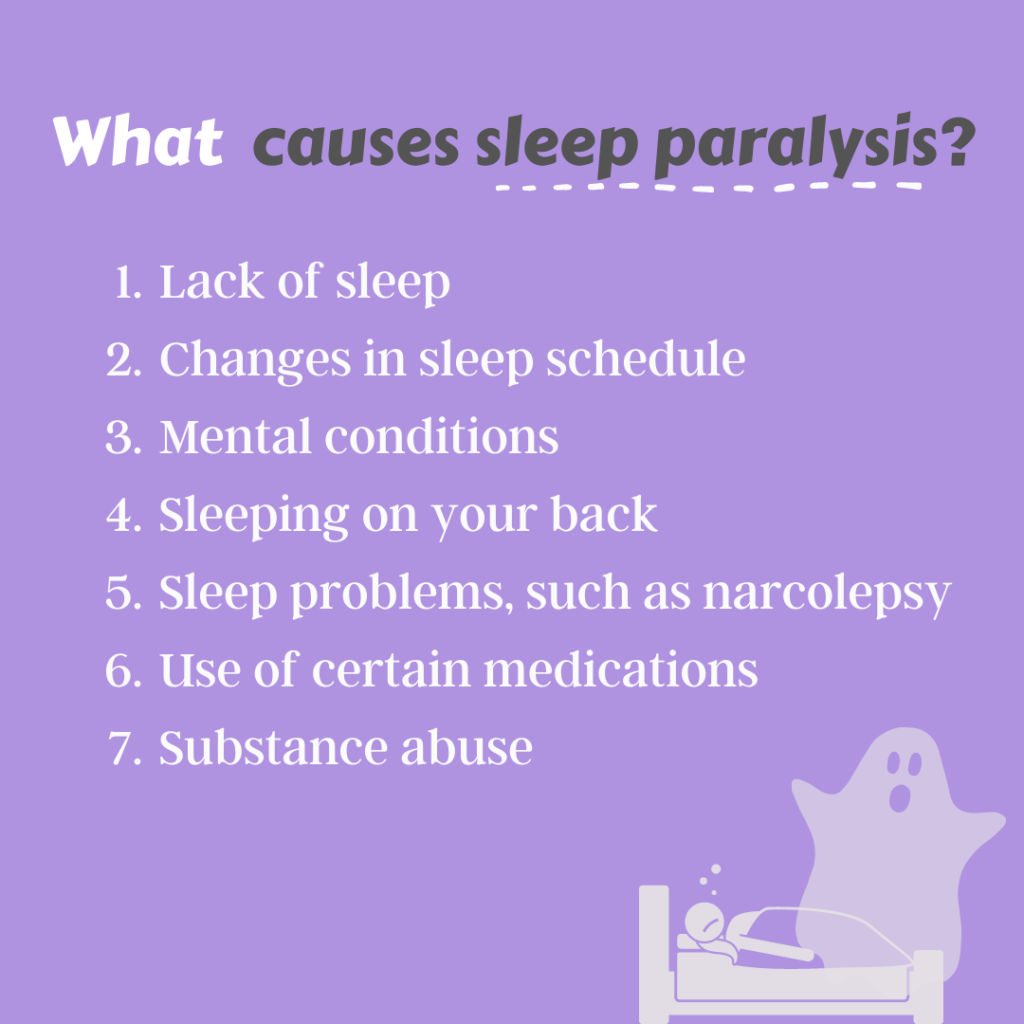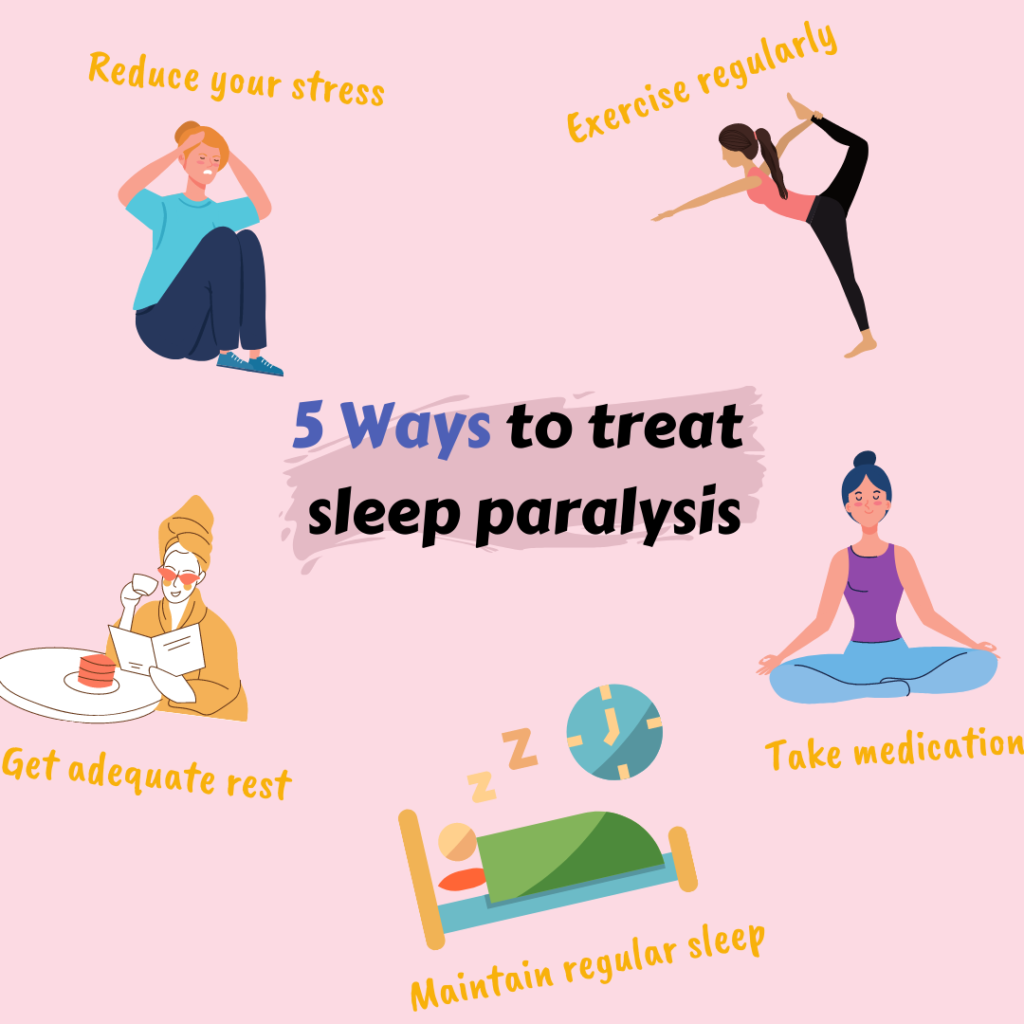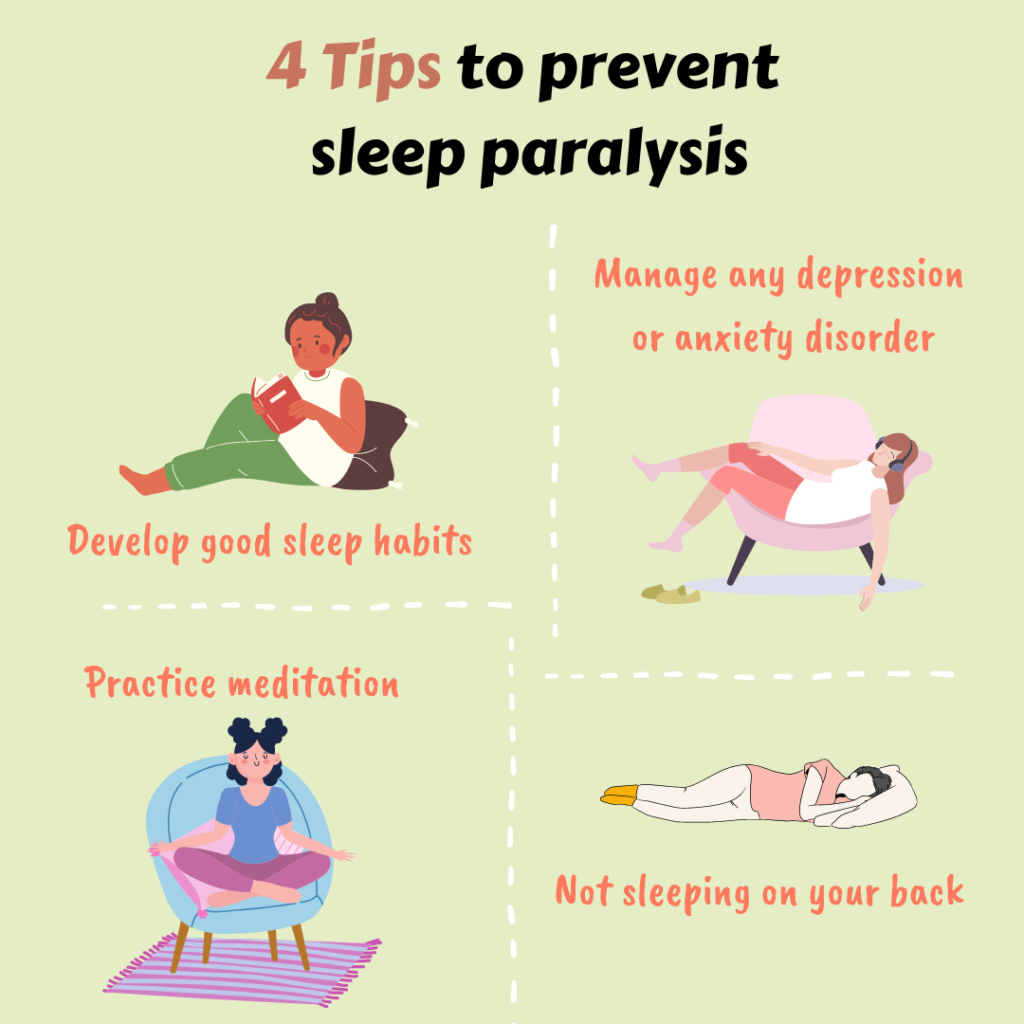Sleep paralysis is a sensation of being unable to move either at the onset of sleep or upon awakening, which may be accompanied by hallucinations and intense feelings of fear[1]. The symptoms of sleep paralysis have been described in many ways over the centuries, and are often attributed to the presence of “evil”. Understanding what is sleep paralysis, what causes sleep paralysis as well as the preventive and treatment measures can well dispel people’s fears of sleep paralysis.
What causes sleep paralysis?
So what causes sleep paralysis exactly? Sleep paralysis usually begins in adolescence and may become frequent in the 20s and 30s. As many as four out of ten people may suffer from sleep paralysis. But don’t worry too much, it’s not a serious risk.

Sleep paralysis occurs between wakefulness and sleep, either just after falling asleep or in the morning. Paralysis is usually accompanied by hypnagogic experiences, such as visual, auditory and sensory hallucinations.
Sleep paralysis sometimes occurs in families. But it is rare. There is no clear scientific evidence that the disease is hereditary. The main causes of sleep paralysis include:
- Lack of sleep.
- Changes in sleep schedule.
- Mental conditions, such as stress or bipolar disorder.
- Sleeping on your back.
- Other sleep problems, such as narcolepsy or nocturnal leg cramps.
- Use of certain medications, such as those used to treat ADHD.
- Substance abuse.
Most of these causes of sleep paralysis are related to sleep problems. This is since the fact that sleep paralysis is a type of insomnia, which is an abnormal behavior during sleep. Since it is associated with the rapid eye movement (REM) stage of the sleep cycle, sleep paralysis is considered REM insomnia[2].
Standard REM sleep includes vivid dreams and insomnia, which helps to detach from the dream state in time. However, under normal circumstances, insomnia ends when you wake up, so you are never aware of this inability to move.
However, researchers say that sleep paralysis involves a disruption or splitting of the REM sleep cycle, causing the body’s transition to rapid eye movement sleep to be out of sync with the brain. At this point, you are conscious but your body remains in paralyzed sleep state.
What are the symptoms of sleep paralysis?
Sleep paralysis can last from a few seconds to about 20 minutes, with an average duration of between six and seven minutes, and signs and symptoms of sleep paralysis may include:
- Inability to move the body when falling asleep or waking up for several seconds or minutes.
- Conscious awakening.
- Hallucinations and sensations that cause fear.
- Feeling pressure on the chest.
- Difficulty breathing.
- Feeling as if death is imminent.
- Sweating.
- Have headaches, muscle pains, and paranoia.
In most cases, sleep paralysis ends on its own, but occasionally it is interrupted by the touch or sound of another person or by a great effort to overcome a powerless state.
How to treat sleep paralysis?

Most people do not need treatment for sleep paralysis. If you are feeling anxious or unable to sleep, treatments for any underlying disorder such as episodic sleeping sickness may be helpful. These treatments[3] may include the following:
- Reduce the stress in your life.
- Exercise regularly, but not close to bedtime.
- Get adequate rest.
- Maintain a regular sleep schedule.
- Keep track of the medications you take.
Although sleep paralysis does not usually require a medical diagnosis. However, if you experience symptoms like frequent occurrences of sleep paralysis, concerns about falling asleep and difficulty falling asleep, or suddenly falling asleep and feeling unusually sleepy during the day, it is best to see a doctor.
How to prevent sleep paralysis?
There is no specific prevention method for sleep paralysis, but the possibility of sleep paralysis can be reduced by stress management, maintaining a regular sleep schedule, and following good sleep habits.

You may try these methods to prevent sleep paralysis from occurring:
- Develop good sleep habits.
- Manage any depression or anxiety disorder.
- Practice meditation.
- Not sleeping on your back.
In conclusion, sleep paralysis is not terrible. A good night’s sleep is the key to solving this. You can try some sleep and meditation products such as MindZone to get professional meditation guidance and some sounds and techniques to help you fall asleep quickly and peacefully.
References
- [1] Denis, D., French, C. C., & Gregory, A. M. (2018). A systematic review of variables associated with sleep paralysis. Sleep Medicine Reviews, 38, 141-157.
- [2] Mahowald, M. W., & Schenck, C. H. (2010). REM sleep parasomnias. In Principles and Practice of Sleep Medicine: Fifth Edition (pp. 1083-1097). Elsevier Inc..
- [3] Solomonova, E. (2018). 31 Sleep Paralysis: Phenomenology, Neurophysiology, and Treatment. The Oxford Handbook of Spontaneous Thought: Mind-Wandering, Creativity, and Dreaming, 435.


